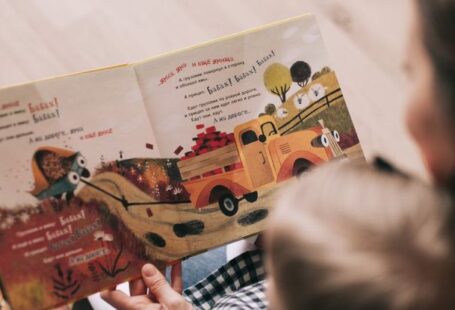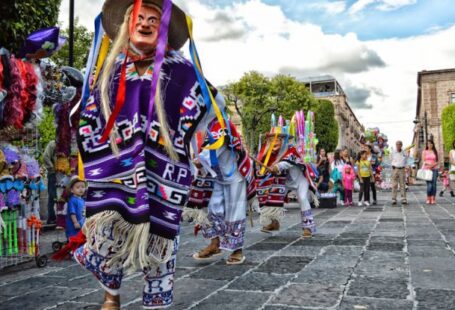The bustling streets of ancient Rome were filled with the vibrant energy of its people going about their daily lives. From sunrise to sunset, the city was alive with activity and movement, each moment dictated by the rhythms and paces of Roman daily life. For those looking to immerse themselves in the rich tapestry of Roman culture, understanding and adjusting to these rhythms is key. Here are some tips on how to navigate and adapt to the unique pace of life in ancient Rome.
Embrace the Early Mornings
In ancient Rome, the day began at sunrise, with people waking up early to start their daily routines. To truly immerse yourself in the Roman way of life, try waking up with the sun and embracing the early mornings. Take a stroll through the quiet streets before they come alive with the hustle and bustle of the day. Enjoy a leisurely breakfast of bread, olives, and cheese, just like the Romans did, before diving into the day’s activities.
Experience the Forum at its Peak
The Roman Forum was the heart of the city, where politics, commerce, and social life intersected. To truly understand the rhythms of Roman daily life, spend some time in the Forum at its peak hours. Watch as traders haggle over goods, politicians make speeches, and citizens gather to socialize. Immerse yourself in the vibrant energy of the Forum and soak in the sights and sounds of ancient Rome.
Indulge in a Leisurely Afternoon Siesta
In ancient Rome, the pace of life was not always frenetic. After the midday meal, many Romans would indulge in a leisurely afternoon siesta to escape the heat of the day. To adjust to the rhythms of Roman daily life, take a cue from the ancient Romans and allow yourself some downtime in the afternoon. Find a shady spot to relax, read a book, or take a nap. Embracing the tradition of the afternoon siesta can help you recharge and prepare for the evening ahead.
Explore the Markets and Street Vendors
The markets of ancient Rome were a vibrant hub of activity, with vendors selling everything from fresh produce to exotic spices. To truly immerse yourself in the daily rhythms of Roman life, spend some time exploring the markets and interacting with the street vendors. Sample local delicacies, haggle for goods, and soak in the sights and smells of the bustling marketplaces. By immersing yourself in this aspect of Roman daily life, you can gain a deeper appreciation for the city’s vibrant culture and traditions.
Attend a Public Event or Festival
Public events and festivals were an integral part of Roman daily life, providing opportunities for entertainment, socializing, and religious observance. To fully adjust to the rhythms of Roman daily life, make a point of attending a public event or festival. Whether it’s a chariot race at the Circus Maximus, a theatrical performance at the Colosseum, or a religious ceremony at a temple, experiencing these events firsthand can give you a glimpse into the rich tapestry of Roman culture.
Immerse Yourself in Roman Cuisine and Dining Customs
Food played a central role in Roman daily life, with meals serving as a time for socializing, feasting, and relaxation. To fully embrace the rhythms of Roman daily life, immerse yourself in the city’s culinary traditions. Sample dishes like garum (a fermented fish sauce), dormice (a delicacy), and honeyed wine to experience the flavors of ancient Rome. Familiarize yourself with dining customs, such as reclining on a triclinium (a dining couch) and using your hands to eat. By exploring Roman cuisine and dining customs, you can gain a deeper understanding of the role that food played in Roman daily life.
Adapt to the Roman Concept of Time
In ancient Rome, time was measured differently than it is today. Romans divided the day into 12 hours of daylight and 12 hours of darkness, with each hour varying in length depending on the time of year. To adjust to the rhythms of Roman daily life, embrace this different concept of time. Allow yourself to be guided by the rising and setting of the sun, rather than the ticking of a clock. Embrace the ebb and flow of the day, with its moments of activity and moments of rest, and allow yourself to adapt to the natural rhythms of ancient Rome.
Incorporate Roman Wellness Practices into Your Routine
Wellness was a priority for the ancient Romans, who believed in the importance of maintaining a healthy mind and body. To adjust to the rhythms of Roman daily life, consider incorporating some of their wellness practices into your routine. Take a leisurely stroll through the city’s parks and gardens, practice yoga or meditation in the open air, or visit the public baths for a relaxing soak. By prioritizing your physical and mental well-being, you can align yourself with the holistic approach to wellness that was central to Roman daily life.
Immerse Yourself in the Arts and Culture of Ancient Rome
Art and culture were integral parts of Roman daily life, with the city boasting impressive architecture, sculpture, and literature. To fully adjust to the rhythms of Roman daily life, immerse yourself in the arts and culture of ancient Rome. Visit the city’s museums and galleries to admire ancient artifacts and artwork, attend a theatrical performance or musical recital, or explore the ruins of ancient Roman buildings. By engaging with the arts and culture of ancient Rome, you can gain a deeper appreciation for the city’s rich heritage and traditions.
Incorporate these tips into your daily routine and embrace the rhythms and paces of Roman daily life. By immersing yourself in the vibrant energy of ancient Rome, you can gain a deeper understanding of the city’s culture, traditions, and way of life. Embrace the early mornings, indulge in a leisurely siesta, explore the markets and street vendors, attend public events and festivals, immerse yourself in Roman cuisine and dining customs, adapt to the Roman concept of time, incorporate Roman wellness practices into your routine, and immerse yourself in the arts and culture of ancient Rome. By adjusting to the unique rhythms of Roman daily life, you can experience the city in a whole new light and gain a deeper appreciation for its rich history and heritage.





